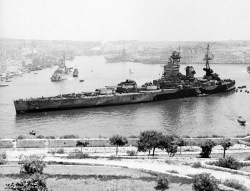Story 2213
Brooklyn Navy Yard, September 13, 1943
The hull of the USS Missouri entered the dirty waters of the East River moments after a bottle of champagne was broken across her bow. Workers and her crew still had months of labor and then training before the last battleship ever to be accepted into the United States Navy would be ready for battle, but the building slip was needed for more important work. Hours after the ceremony, a landing ship's keel blocks were being arranged. Steel would be cut starting tomorrow for an LST.
The hull of the USS Missouri entered the dirty waters of the East River moments after a bottle of champagne was broken across her bow. Workers and her crew still had months of labor and then training before the last battleship ever to be accepted into the United States Navy would be ready for battle, but the building slip was needed for more important work. Hours after the ceremony, a landing ship's keel blocks were being arranged. Steel would be cut starting tomorrow for an LST.
